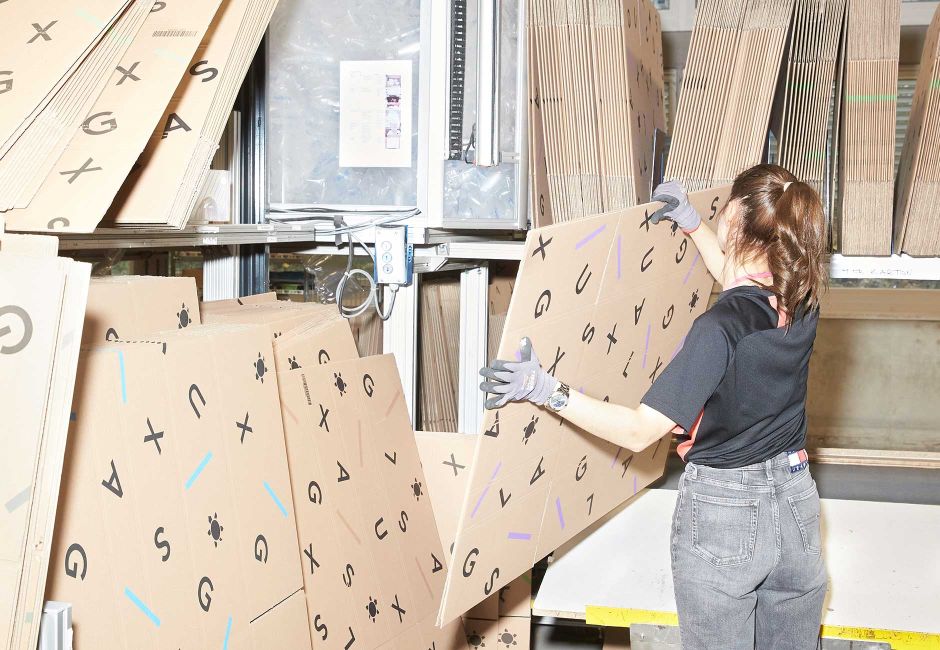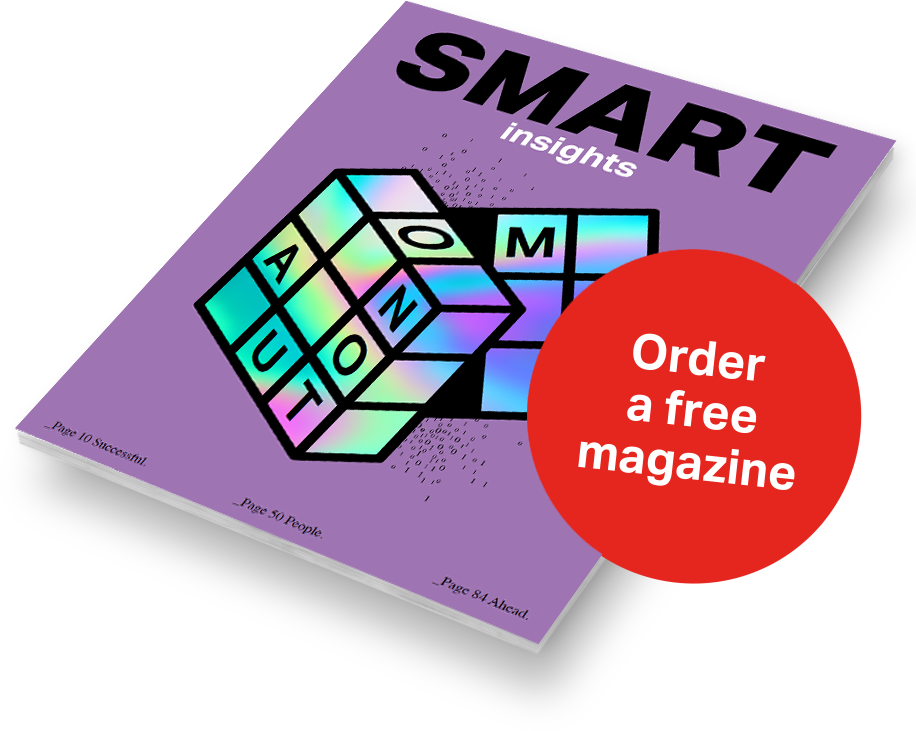This article was published in the Ergon Magazine SMART insights 2023. Order your free copy now.
Digitec Galaxus is letting air out – at least out of its packages. Switzerland’s largest online retailer has optimised its box sizes, with a reworked model that adapts them better to their contents. That saves costs, respects the environment, and makes for happy staff and customers. Supply Chain Process Engineer Aurel Gautschi explains how a model with seven billion variables has cut the empty space in each package by around a third.
Airmailing is expensive, even if it stays on the ground. As Switzerland’s largest online retailer, Digitec Galaxus dispatches a constant stream of trucks with goods in the most varied combinations. Until recently, these were packed into eight different package sizes. What most of them had in common was plenty of empty space. Transporting it is expensive, and it is anything but environmentally friendly. The space needs to be filled to prevent the goods being damaged in transit. That costs money and valuable resources, not just for production, but also for disposal. Excessively large packages are also more expensive to send, and take up more space in the delivery van. And that ultimately means higher fuel consumption. There’s more: strings of air cushions and other fillers are very unpopular with customers. Boxes that are too big are, quite rightly, the number one cause of customer complaints. So there are many good reasons to optimise package sizes, but how do you find the right box for each individual order?
Considering people and the environment
“Our range is very broad, and customers order the most varied combination of items,” Aurel Gautschi explains. “Ideally, we would have an infinite number of box sizes, then we would have exactly the right one for each order.” The problem is the unjustifiable cost. Each additional box size takes up space in the warehouse and makes the packing teams’ job harder. Digitec Galaxus runs four packing machines that can cut a significant proportion of packages to size, but they have technical restrictions. That is why the majority of packages are still packed by hand, and that is the way it will stay. For the packers to be able to work with maximum efficiency, there needs to be a manageable number of package sizes. The environment is also a priority for the online retailer, and reducing the empty space in its boxes is an important step towards a more sustainable future.

“We aren’t interested in removing the human factor from the business. We use technology to make the work as comfortable as possible.”
Three possible solutions
Working closely with the logistics team, Gautschi developed a set of requirements. There were to be eight or nine package sizes, their handling as ergonomic as possible, and the amount of empty space for each order minimal. Carton thickness, use of parcel tape and processing time were further criteria by which to optimise the solution. Finding the right model was no easy task. “I soon realised that the only right solution using an algorithm was to be found in big data,” says Gautschi. “With a project of this complexity, it was important to me to have several proposals.” In just two months, two internal teams and one external, working independently, developed three approaches. This demanded a great deal of engineering and cloud computing expertise. And the teams were banned from communicating so that they wouldn’t influence each other. The idea was to ensure that the solution was completely sound. Gautschi then worked with his team to test every aspect of the three proposals. Using a set of training data, they produced results from each approach, and then tested those individual results using a test dataset. Ultimately, the external solution from Ergon won them over.
Seven billion variables
“Normally we go for internal solutions,” Gautschi comments. “But Ergon already has plenty of experience with optimising logistics, and offered us the most complex solution.” The three proposals performed in much the same way on the principal criteria of empty space, ergonomics and resource consumption. Ergon’s solution, meanwhile, had a clear edge with regard to subsidiary criteria, such as how fast staff could pack the boxes. It is based on a model with no fewer than seven billion variables, optimised to Digitec Galaxus’s specific requirements. This was a large-scale project and therefore ideal for a high-performance server in the cloud. It takes just a few hours to work out the optimum package sizes. The result was nine package sizes in up to four different heights, giving a total of 25 options. But the project team went a step further and optimised the optimisation with technical and mathematical mastery. The problem can now be solved in just a few minutes on a standard PC.
 One box, four package sizes. Crease lines make it possible to adapt the size of a package to its contents.
One box, four package sizes. Crease lines make it possible to adapt the size of a package to its contents.
 The new package sizes make the packers’ job easier, because they can assemble them more efficiently at their packing stations.
The new package sizes make the packers’ job easier, because they can assemble them more efficiently at their packing stations.
 Less air, more substance. Packages contain 28 per cent less empty space and require almost a third less filler. The new sizes mean many more packages per delivery van.
Less air, more substance. Packages contain 28 per cent less empty space and require almost a third less filler. The new sizes mean many more packages per delivery van.
Measurable success
The new package sizes have been in use since the autumn of 2022. They are more efficient, less costly, and more environmentally friendly. The success of the new system is measurable: there is 28 per cent less empty space per package, which also means almost a third less filler, and many more packages per delivery van. Customers are happy that there is less waste, and negative feedback has fallen considerably. It’s also good for the environment, with more sustainable packaging and a smaller carbon footprint. The most important thing, according to Gautschi? “We’ve had lots of positive feedback from our staff.” The new box sizes are much more ergonomic, so packers can assemble them more efficiently at their packing stations, making their work easier. In other words, they are better able to do their jobs. Gautschi is in no doubt that the project was a mathematical masterpiece. Yet without the openness of the internal IT team and logistics staff it would not have been possible. “It was a real team achievement!”
It was an achievement right down the line, in fact. Optimised package sizes make the online retailer more efficient, increase employee satisfaction, and make for happier customers, all while respecting resources and the environment. So, goodbye to airmailing!
Autonomy is important in a work setting because...
... it allows people to develop to their full potential
A person comes into their own in their work if they have autonomy. That’s how they develop to their full potential.
... people identify more closely with their work
If you have greater independence, you identify more quickly with your project. That often leads to your delivering more than you actually have to. You automatically go the extra mile.
... it puts the emphasis on trust
When I was still a Junior Supply Chain Process Engineer I was assigned an important project. They trusted me because I had greater expertise in the area concerned than many of my colleagues, and probably also my managers. I appreciated it hugely.
